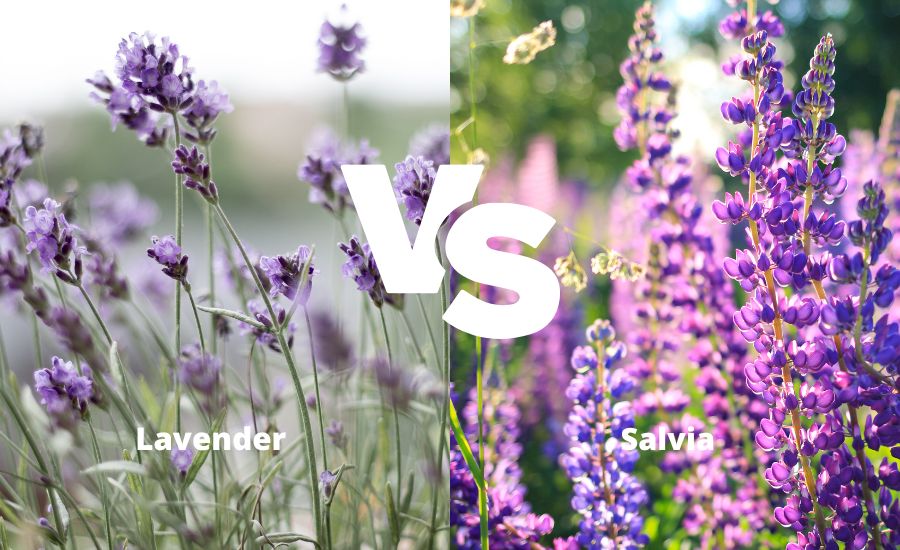Salvia (Russian sage) and Lavender are both popular herbs with distinct differences. Salvia, also known as sage, has a bold, savory flavor and is commonly used in cooking to enhance the taste of meats.
On the other hand, Lavender is known for its sweet scent and is often used in aromatherapy and skincare products.
It contains relaxing qualities that can aid in lowering tension and anxiety, as well as fostering relaxation and a restful night’s sleep.
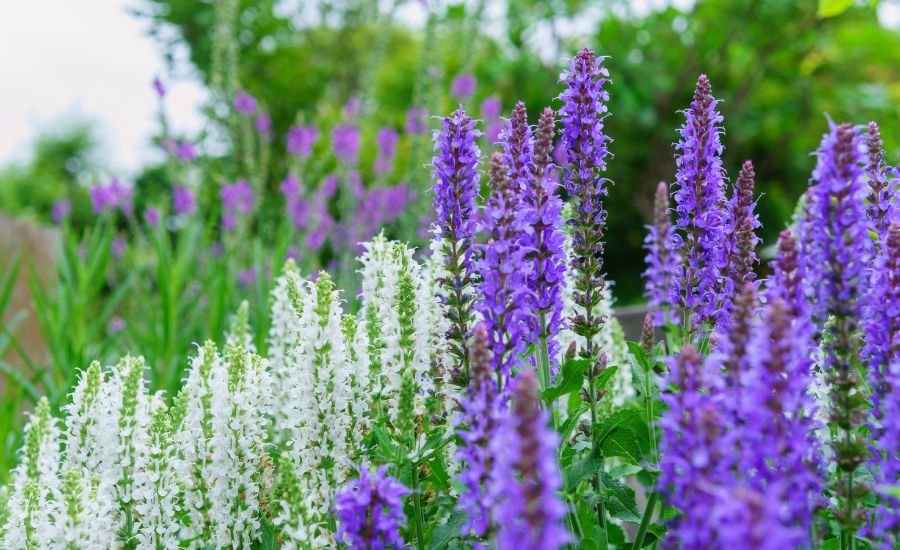
Contents
- 1 What is Russian sage and what it’s used for
- 2 Salvia root system
- 3 Lavender root system
- 4 Russian sage and Lavender leaves
- 5 How to look after Lavender or Russian sage flowers
- 6 Is Salvia a form of Lavender?
- 7 Lavender and Salvia flowers and blooming season
- 8 What is the difference between Lavender and sage?
- 9 Can you grow Salvia with lavender?
- 10 What is the difference between Salvia and sage?
- 11 Lavender and Russian sage types
- 12 Potential benefits and usage
- 13 Russian sage vs. lavender, which one wins?
- 14 Frequently asked questions
What is Russian sage and what it’s used for
Russian sage is a plant species that is native to Mexico and Central and South America. It is commonly known as sage, but it should not be confused with the sage plant used for culinary purposes.
The Russian sage plant is known for its psychoactive properties, thanks to the presence of the compound Salvinorin A.
Native American tribes have long employed Russian sage for its healing and spiritual powers. Salvia is frequently used today due to its hallucinogenic effects.
Using or smoking Salvia can cause strong hallucinations, changes in how time and space are perceived, and a sense of loss from reality.
Salvia has been used recreationally by some people, although it can be harmful if taken in excessive doses or combined with other drugs or alcohol.
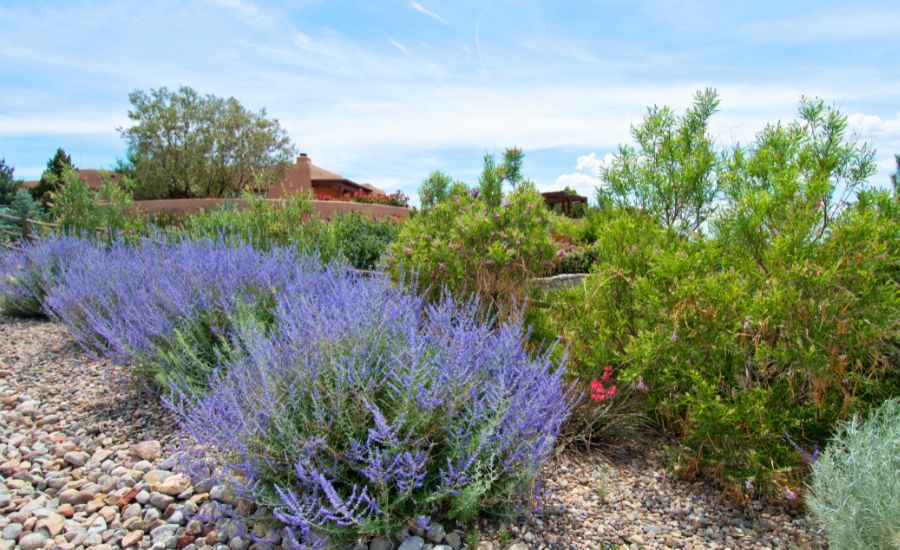
Salvia root system
The root system of Salvia yangii plants is typically taproot in nature, with a thick central root and smaller lateral roots branching out from it.
The length and depth of the roots can vary depending on factors such as soil type, moisture levels, and plant species.
In general, the root system of Russian sage plants plays a crucial role in absorbing water and nutrients from the soil and anchoring the plant securely in place.

Root rot reasons
- Overwatering: Russian sage plants require well-drained soil, and overwatering can lead to waterlogged soil, which can suffocate the roots.
- Poor Drainage: Poorly drained soil can also cause water to accumulate around the roots and lead to root rot.
- Fungal Infections: Russian sage plants are susceptible to various fungal infections, which can cause root rot.
- Soil Compaction: Compacted soil can prevent proper air circulation to the roots, leading to rot.
- Transplant Shock: If the plant is transplanted too often, it can damage the roots and make them more susceptible to rot.
To prevent root rot, make sure to plant Salvia (Russian sage plant) in well-drained soil, water only when the top inch of soil is dry, and avoid over-fertilizing.
Lavender root system
Lavender may grow all over the world despite having a shallow root system that only extends a few feet deep. The roots of Russian sage, on the other hand, can go as far as 18 inches into the ground.
Russian sage grows best in the warmer months, whereas the Lavender plant does best in the cooler ones. Both plants have distinct growing seasons.
Both Russian sage and Lavender require frequent watering, full sun, and well-drained soil in order to grow.
Russian sage requires relatively little maintenance, however, growing Lavender requires more attention in terms of soil preparation and pruning.
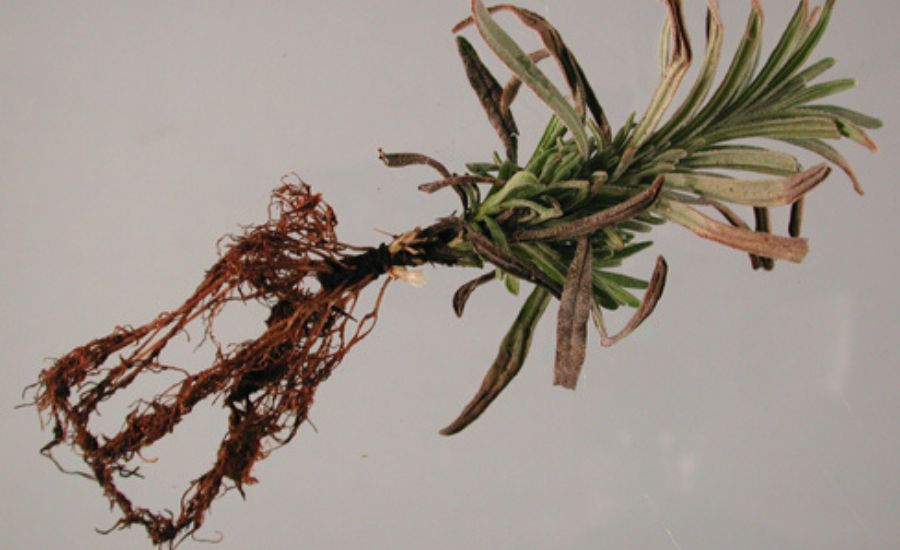
Russian sage and Lavender leaves
Russian sage leaves are rich in antioxidants and can be used in tea or as a flavoring for various dishes, such as soups, salads, and meat dishes.
Additionally, Russian sage leaves are also used as a natural remedy for digestive issues, headaches, fatigue, and anxiety.
When it comes to the leaves, Russian sage leaves are thinner and more delicate, while Lavender leaves are broader and sturdier.
Lavender leaves
Lavender leaves are fragrant and are commonly used in perfumes, oils, and cosmetics.
They can also be used in cooking to add a hint of Lavender flavor to dishes such as baked goods, teas, and salads.
In addition, Lavender leaves have been used in traditional medicine for their calming effect on the body and mind.
In terms of aroma, Lavender plants have a distinctive floral scent, while Russian sage leaves have a slightly earthy and musky scent.
Therefore, Russian sage vs Lavender both have unique features, and the choice of which to grow would depend on individual preferences and growing conditions.
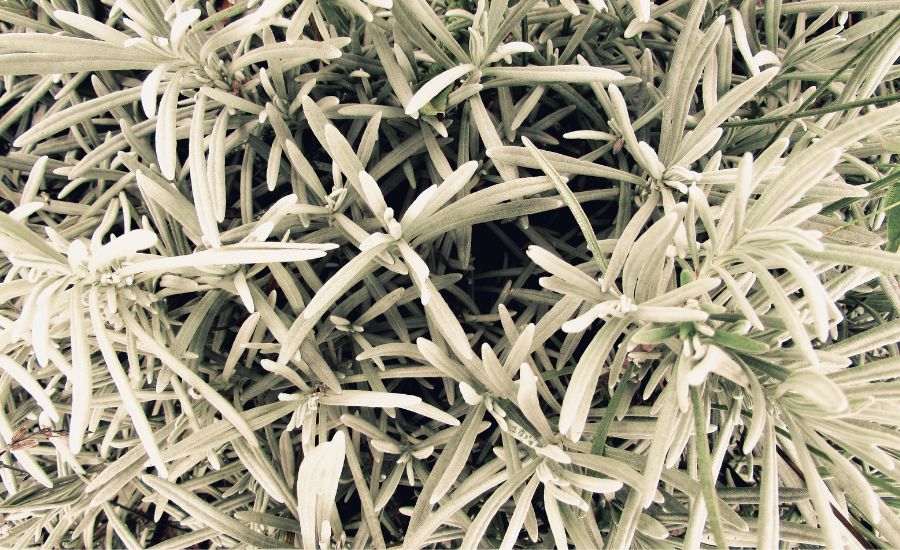
How to look after Lavender or Russian sage flowers
To keep a Russian sage and Lavender flower bed short, you can prune them regularly. Cut back the Russian sage by 1/3 to 1/2 of its height in early spring to encourage a bushy growth habit.
Deadhead the flowers as they fade to promote more blooms.
Lavender should be pruned once a year, either in the early spring or in the late summer, or early fall after flowering. Cut the stems to a third of their original length, or until new, green growth appears. This promotes leggy growth and keeps the form compact and bushy.
Also, consider planting them in a space that fits their mature size to avoid overcrowding and excessive growth.
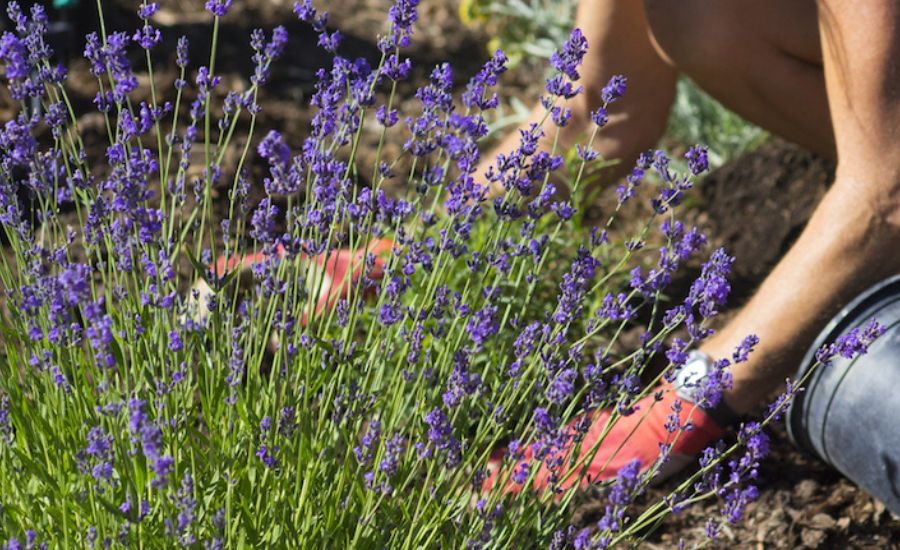
Is Salvia a form of Lavender?
Russian sage (Salvia yangii) is not a form of Lavender. Though they belong to the same sage family (Lamiaceae), they are two plants that are distinct species.
Lavender is known by its scientific name Lavandula angustifolia. At the same time, Salvia is a genus of plants that includes multiple species, such as Salvia officinalis (common sage) and Russian sage splendent (scarlet sage).
Russian sage and Lavender differ in appearance, growing habits, and usage.
Lavender is typically grown for its fragrant flowers or essential oils, while Salvia is often cultivated for its culinary or medicinal properties.
Lavender and Salvia flowers and blooming season
Russian sage flowers and Lavender are both popular ornamental plants known for their beautiful and attractive scent. Here is an answer on the flower colors and seasons:
Russian sage
- Flower colors: Russian sage comes in a range of colors, including shades of blue flowers, pink, red, white, and deep purple flowers. The most common color is blue or blue-violet.
- Blooming season: The flowering season for Salvia plants varies depending on the species, but most varieties bloom from late spring to fall. Some species, such as Salvia Nemorosa, bloom earlier in the season, usually from May to June, while others, like Salvia Leucantha, bloom later in the season, usually from September to October.
Lavender:
- Flower colors: Lavender flowers are typically shades of deep purple, although some species may also have white and mauve flowers.
- Blooming season: Lavender plant generally blooms in the mid-summer, from June to August. Some varieties may continue to bloom into the fall if the weather is mild. The exact timing of blooming may also depend on the individual plant, as well as the local climate and growing conditions.
Blooming season duration – Lavender typically blooms for about 4–6 weeks during the summer, typically from late June to early August.
Russian sage also blooms during summer, typically from July to September, and can continue to bloom for up to 10 weeks.
However, the blooming season can vary depending on climate and specific growing conditions.
In inevitable conclusion, Salvia has a wider spectrum of floral hues than Russian sage and lavender, however, Salvia is more colorful overall.
Depending on the species and the growing environment, both plants often bloom throughout the summer. But, there may be exceptions.
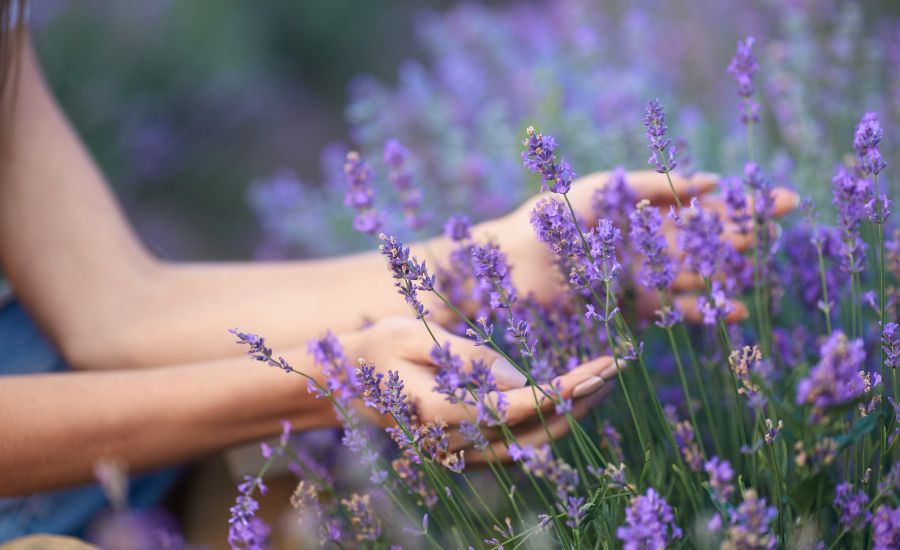
What is the difference between Lavender and sage?
Lavender and Russian sage are both popular herbs that are commonly used for cooking and aromatherapy; however, they differ in their appearance, growth habits, and properties.
Appearance
Lavender is a flowering plant that belongs to the mint family. It has narrow, elongated grey-green leaves, and typically purple flowers, although they can be pink, white, or blue.
Lavender flower spikes are tall, and each flower has a tubular shape with a distinct calyx and corolla.
A perennial plant called Russian sage has fragrant leaves and blooms. Its elongated, supple, gray-green leaves have a little fuzzy feel.
Sage blooms appear in dense clusters on long stems. They have two lips and a long, slender tube, and range in color from light pink to purple blossoms.
Russian sage vs. Lavender
Russian sage and Lavender differ from one another in some significant ways. Lavandula angustifolia, sometimes known as Russian sage, is a kind of Lavender that was once only found in Russia but is now grown all over the world.
The Russian sage has tiny flowers that are typically smaller and less showy than those of Lavender, and they have a less intense fragrance.
Salvia genus of plants includes well over nine thousand species, many of which are commonly known as sage. Some popular varieties of sage include common Russian sage and white sage (Salvia apiana).
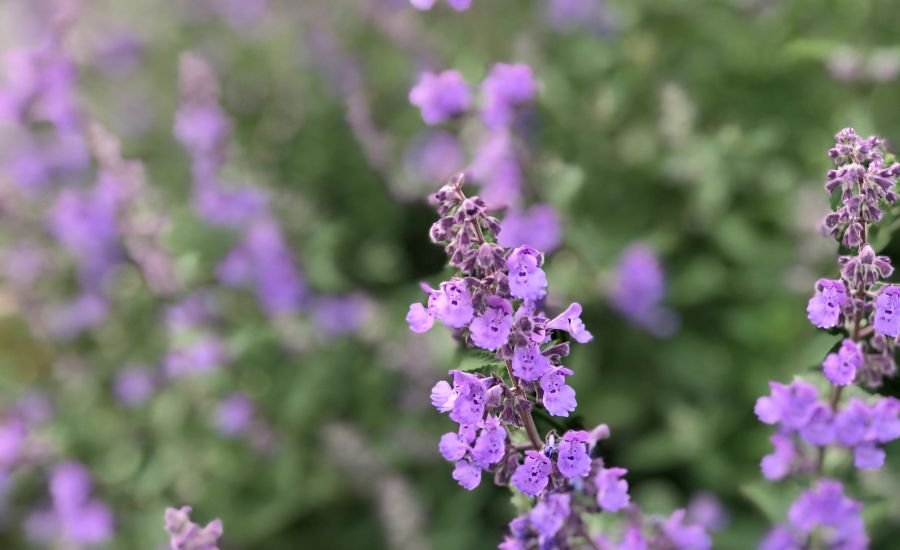
How flowers look like
Lavender flowers are typically larger and more colorful, compared to Russian sage, they can range from shades of red and pink to blue, purple, and white.
In terms of their properties, both Russian sage and Lavender are known for their calming and relaxing effects.
Sage is frequently used in herbal therapy to enhance memory and attention, while Lavender has long been utilized as an aromatic plant to encourage relaxation and relieve stress.
Can you grow Salvia with lavender?
Russian sage and Lavender are both may be called herbaceous perennial plants that can be grown together, as they have similar growth requirements.
Here’s a detailed explanation of how to grow Russian sage and Lavender together
- Soil: Russian sage and Lavender both plants thrive in the well-drained ground that is slightly acidic soils with a pH level of 6.5 – 7.5.
- Sunlight: Both Lavender and sage need full sun exposure, at least 6 hours of direct sunlight every day.
- Water: Lavender prefers moderate soil moisture, while Russian sage prefers dry circumstances. In order to counteract this, you may plant Russian sage in raised beds or pots with adequate drainage, and amend the soil with some organic material to help Lavender retain more water around the base during the growing period.
- Temperature: Lavender and Russian sage are both drought-tolerant and can grow well in a wide range of temperatures. They tolerate both cold and warm weather.
- Planting: Russian sage or Lavender plants should be planted in a sunny area with well-draining soil. Lavender needs to be spaced 18 to 24 inches apart, whereas Russian sage plants need to be at least 12 to 18 inches apart.
- Fertilizing: Both plants require nutrient-rich soil. You can use organic slow-release fertilizers such as compost, manure, or worm castings.
- Maintenance: Prune Russian sage and Lavender regularly to prevent them from getting woody and leggy. Pinching them back will also promote more growth and a fuller plant.
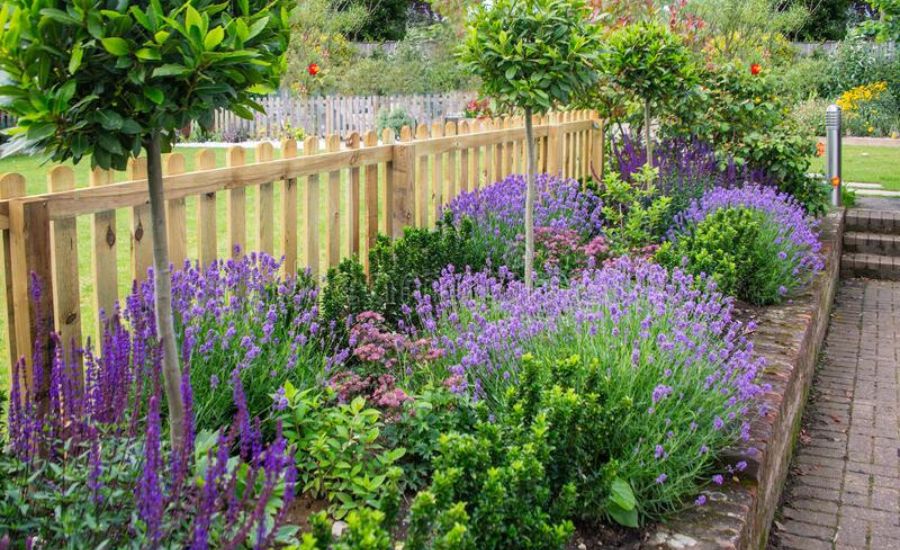
What is the difference between Salvia and sage?
Salvia and sage are both members of the Lamiaceae family of plants. They do, however, have certain differences.
Salvia specifically refers to any of the more than 900 species of plants that make up the genus Salvia.
One of the many plant species that are commonly referred to as sage is Salvia officinalis, sometimes known as common sage.
Russian sage use as a recreational drug carries some hazards, such as lack of coordination, poor judgment, and elevated heart rate.
Common difference features
The look of Salvia and sage is one of their key distinctions. Long, slender, woody stems are a common feature of Salvia plants, and the flowers are typically pink, blue, or purple in color.
Gray-green color leaves and white or pinkish blooms are what sage plants are known for.
These blooms often have a tiny, tubular shape and occur in bunches.
Additional difference aspects
Another difference between these two plants is their blooming period. Salvia plants usually bloom in late spring or early summer, while sage plants bloom in late spring and early summer.
Sage is a common herb used in vegetable gardens for both culinary and therapeutic uses. Salvia plants, on the other hand, are typically more ornamental and are frequently grown in flower beds or borders.
Sage and Salvia plants both require routine care to flourish. To encourage new development, dead flowers, and stalks are removed, and woody stems are pruned down to support the health of the plant.
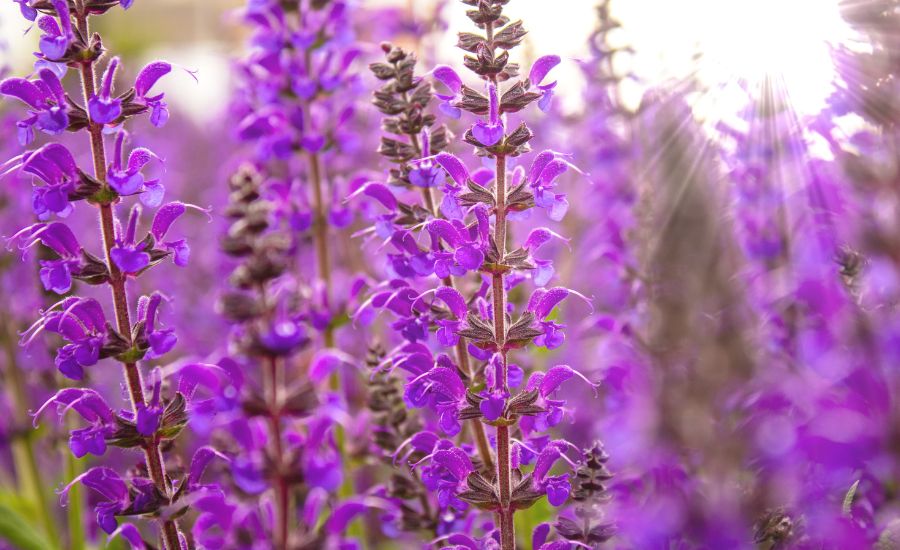
Lavender and Russian sage types
Lavender plants require full sun and well-drained ground, whereas Russian sage can grow in partial shade as well.
Lavender needs some winter protection in cold climates, but Russian sage is a hardy plant that can handle harsh weather conditions.
Types and differences of lavender and Russian sage
Lavender and Russian sage are two popular plants that not only add beauty to your garden but also add fragrance to your surroundings.
French Lavender and Spanish Lavender are different varieties of the Lavender plant.
They yield essential oils that are used in the perfume and cosmetic sphere.
English Lavender is another variety that has a different fragrance from the other two.
Russian Sage, on the other hand, is not a type of Lavender but a member of the mint family. It has similar properties to Lavender and is often used alongside Lavender in gardens.
Potential benefits and usage
Lavender plants are widely used in aromatherapy due to their soothing properties. Different varieties of Lavender are available, including French, Spanish, and English Lavender.
English Lavender is the most commonly used variety, and it is often used in skincare products due to its ability to soothe and calm the skin.
When it comes to sage vs. Lavender, Lavender can be particularly beneficial for older individuals, as it can help improve their sleep quality and reduce anxiety.
Russian sage and Lavender are both aromatic plants with numerous benefits. Russian sage blooms on lateral flower stalks and is a beautiful addition to any vegetable garden. Lavender essential oil has many medical benefits and is widely used in aromatherapy.
The benefits of Russian sage include its ability to attract beneficial insects to the garden, such as bees and butterflies.
The plant is also deer and drought-resistant, making it a low-maintenance addition to any vegetable garden.
The Lavender essential oil has been used for its calming and anxiety-reducing effects. It may also have anti-inflammatory and pain-reducing properties.
Additionally, Spanish Lavender has a pleasant scent that can help promote relaxation and improve sleep quality.
In summary, both plants have many benefits. Russian sage adds beauty to the garden and attracts beneficial insects, while lavender essential oil has medical benefits and a pleasant scent that can promote relaxation.
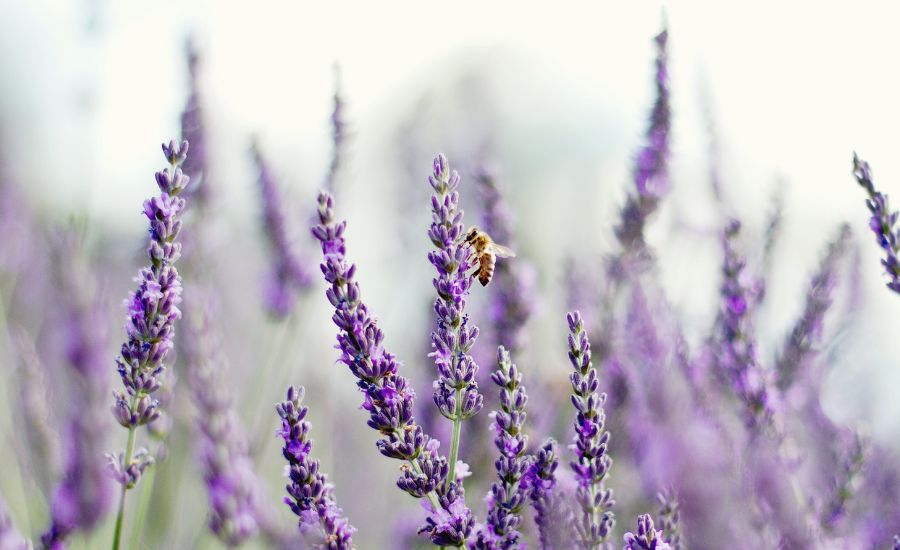
Russian sage vs. lavender, which one wins?
Russian sage (Perovskia atriplicifolia) and Lavender (Lavandula spp.) are both very popular garden plants that are known for their beautiful and fragrant flowers.
While they have some similarities in appearance and cultural requirements, there are also some key differences between them. Here’s a detailed comparison of Russian sage vs. Lavender:
Appearance:
Russian sage has extremely fragrant, deeply lobed, silvery-gray leaves. In the summer, it bears tall, slender spikes of violet-blue blooms that rise above the foliage.
Contrarily, Lavender has small, fragrant leaves with a grayish-green tint. Although there are also white, pink, and purple variants, spikes of tiny lavender-blue blossoms initially start to bloom in the middle to end of July.
Cultural requirements:
While both plants benefit from full sunlight and soil that is well-drained, Russian sage is more tolerant of hot, dry weather. It is a fantastic choice for xeriscaping because it can even withstand drought. On the other hand, Lavender is more susceptible to heat and dryness and prefers somewhat damp soil.
Hardiness:
Russian sage is hardy in USDA zones 5-9, while Lavender can vary depending on the species and variety. English Lavender is hardy in zones 5-8, while Spanish and French Lavender (L. stoechas and L. dentata) are only hardy in zones 8-11.
Uses:
Russian sage is frequently used as a specimen plant or as a background plant in borders. It is a fantastic choice for the landscape due to its airy growth habit and high spikes. Moreover, it draws butterflies and bees.
Lavender’s fragrant blooms and foliage are utilized frequently. It can be cultivated as a low hedge, in herb gardens, or in containers.
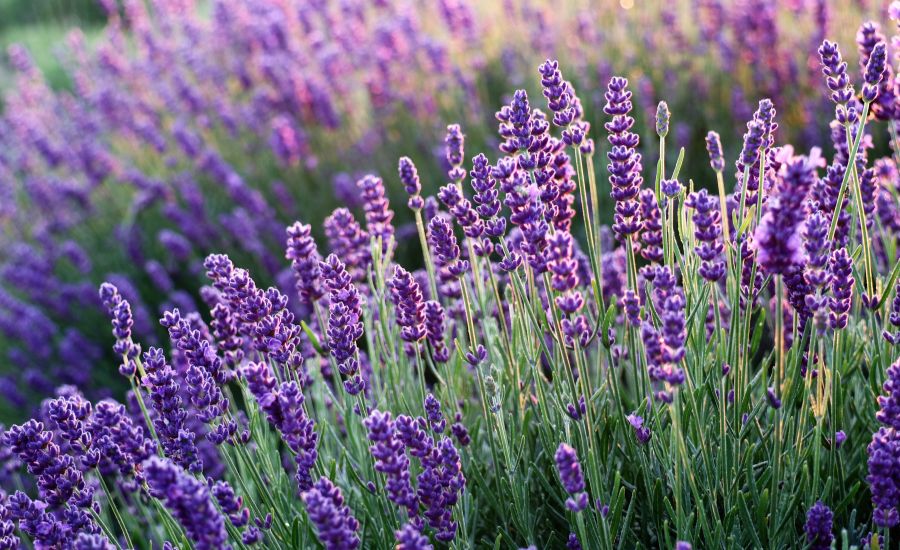
Frequently asked questions
How to distinguish Lavender from Russian sage?
There are a few key differences between Lavender and Russian sage that you can look for to distinguish between the two:
1. Leaves: Lavender has needle-like leaves that are grayish-green in color, while Russian sage has elongated, spear-shaped leaves that are a brighter green.
2. Flowers: Lavender blooms in shades of purple flowers, pink, or white, while Russian sage has spiky flowers in shades of blue, purple, or pink.
3. Height: Lavender plants tend to be smaller and bushier, growing to a maximum height of around 2 to 3 feet, while Russian sage can grow up to 4 feet tall and are more upright.
4. Fragrance: Lavender has a distinct floral fragrance, while Russian sage has a lighter, more subtle scent.
How to grow Russian sage or Lavender plants?
Russian Sage:
1. Choose a sunny and well-draining location for planting.
2. Amend the soil by adding compost or other organic matter.
3. Plant the Russian sage in the spring or fall, about 18-24 inches apart.
4. Water regularly during the first growing season to establish the plant.
5. Russian sage is drought tolerant and doesn’t need much water once established.
5. Prune the plant back in late fall or early spring to promote healthy growth.
Lavender:
1. Choose a sunny and well-draining location for planting.
2. Amend the soil by adding compost or other organic matter.
3. Plant the lavender in the spring or fall, about 18-24 inches apart.
4. Water regularly during the first growing season to establish the plant.
5. Lavender prefers soil that is moist but not waterlogged, so avoid overwatering.
6. Prune the plant after blooming to promote healthy growth and prevent woody, leggy growth.
What are the main benefits of Lavender and Russian sage
Both plants have many medicinal benefits.
• Can promote relaxation and reduce stress
• May help with anxiety and depression symptoms
• Has anti-inflammatory and healing properties for skin irritations or wounds
• Can improve sleep quality
• Can help relieve headaches and migraines
• Has a pleasant aroma that can create a calming atmosphere
Russian Sage:
• Has anti-inflammatory and antioxidant properties
• Can help alleviate colds and respiratory issues such as asthma
• May improve digestion and alleviate stomach discomfort
• Can act as a natural bug repellent
• May help with mental clarity and focus
• Has a pleasant aroma that can create a relaxing atmosphere
How many types of Lavender and Russian sage are known?
Some popular varieties of Lavender include English, French Lavender, Spanish Lavender, and hybrid lavender.
Russian sage (Perovskia atriplicifolia) is a single species, but there are several cultivars with different characteristics, including ‘Blue Spire’, ‘Little Spire’, and ‘Longin’.
Read More: Russian Sage vs Lavender

